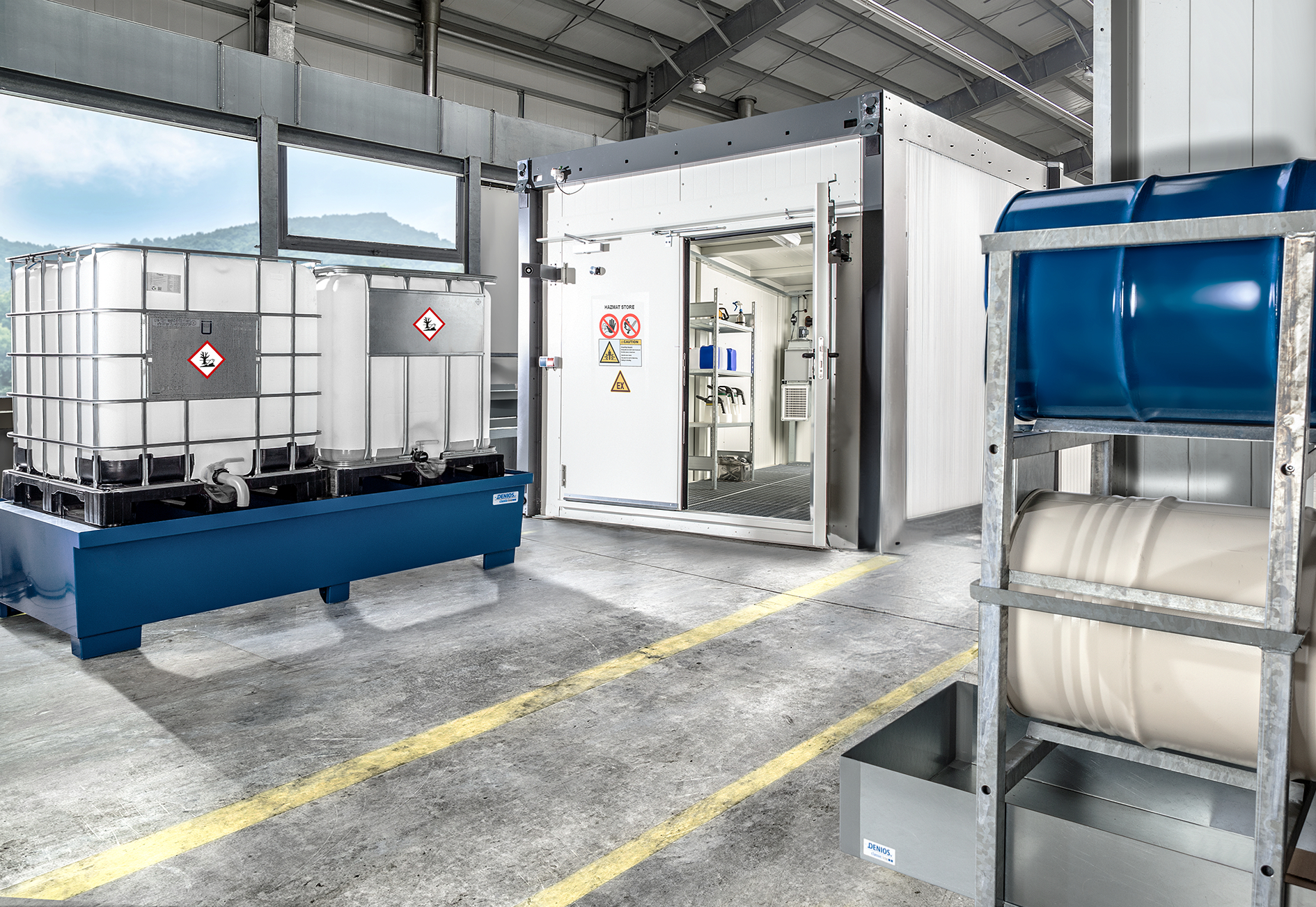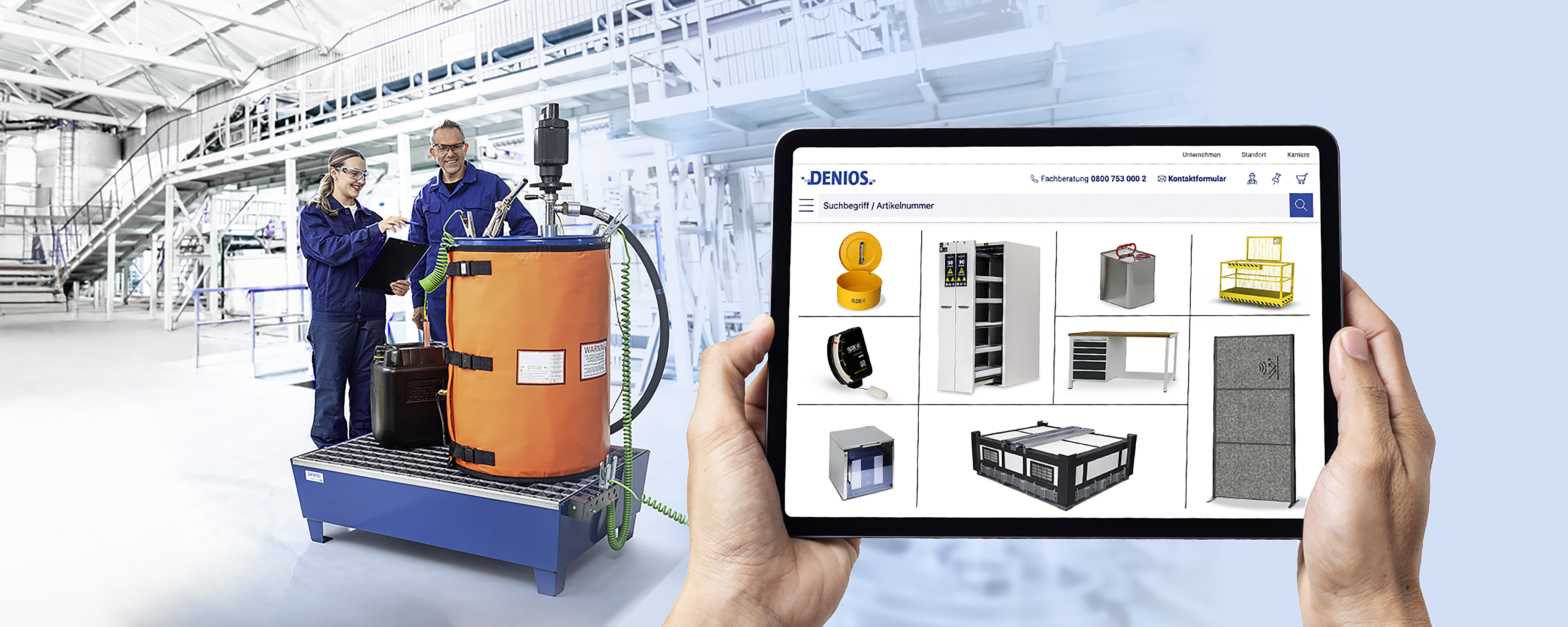“If we made an update within our previous tool, the entire system would blow up in our face. Situations like these were obviously frustrating.”
Kai Peperkorn, Team Lead Data Excellence at DENIOS, recalls the strain of working with the company’s legacy product information management (PIM) system, implemented in 2006. Over time, heavy customizations had transformed it into a costly, high-maintenance platform.
“It worked well for the requirements at the time,” Peperkorn reflects. “In the end, it failed because it could no longer meet evolving demands. Collaboration began to suffer, and we eventually had to move on.”
The challenges went well beyond technical instability. Manual catalog production, data silos and outdated workflows created bottlenecks from content creation to global publication. Product data lacked the depth and flexibility for omnichannel selling.
The impact was slower product launches, higher costs and missed growth opportunities. It was clear that a change needed to take place.
Engineering safety solutions since 1986
Headquartered in Bad Oeynhausen, Germany, DENIOS is a global leader in hazardous materials storage, handling and workplace safety. The company operates in 22 countries with 19 subsidiaries, serving industries ranging from automotive and chemicals to pharmaceuticals, logistics and manufacturing.
With a hybrid model of catalog products and engineered solutions, DENIOS also pioneers innovations such as lithium-ion safety storage and IoT-based leak detection systems. Its omnichannel sales network includes an online-first B2B store available in multiple languages, e-procurement integrations for enterprise clients, a printed catalog and marketplace channels.
From legacy bottlenecks to global agility
By 2013, the old PIM solution had reached a breaking point. Initially customized to meet early needs, it had evolved into a risk-prone environment where even routine updates could trigger system-wide failures.
Print and digital processes were disconnected, with “no direct connection between PIM and image data for image handling at the time,” recalls Peperkorn.
Translations were cumbersome and expensive, involving multiple external agencies. Catalog production sat in rigid, specialist-only tables, so expanding into new markets meant recreating product data from scratch—driving up costs and timelines.
“Processes were a lot more manual and nowhere near as automated as they are today. We also had fewer options for maintaining and storing product data,” says Peperkorn. “The main issue was that the system no longer met the requirements for both catalog and web shop operations. It had served us well up to a point, but we realized it was time to find something better.”


Finding the right solution with a structured evaluation process
Recognizing the urgent need for change, DENIOS partnered with a consulting firm to define over 170 business and technical requirements. From a long list of over 100 vendors, four finalists were shortlisted.
DENIOS selected the AI-powered Product Information Management (PIM) solution, part of Centric PXM™ (Product Experience Management), for its intuitive user experience, modular design and proven integration capabilities. Centric PXM unites PIM, Digital Asset Management (DAM), content syndication and Digital Shelf Analytics (DSA) to optimize the entire product commercialization lifecycle.
“Once we agreed on Centric PXM, we defined our requirements and the future workflows we wanted to map,” explains Peperkorn.
Having one point of truth means we can prepare, enrich and publish information consistently across every market and every channel.”
A single source of truth for global growth
The rollout in late 2014 was a full-scale transformation. DENIOS restructured its attribute model, redesigned print/online text concepts, integrated with SAP and migrated all digital assets into a connected environment.
Centric PXM, with Centric PIM™ at its core, became DENIOS’ single source of truth for marketing-ready product data, feeding print catalogs, e-commerce, marketplaces and tailored punchout stores for key accounts.
“Central data management is the be-all and end-all here,” emphasizes Peperkorn. “Having one point of truth means we can prepare, enrich and publish information consistently across every market and every channel.”
International expansion became faster and leaner. Rather than rebuilding content for each new market, DENIOS can now reuse and localize existing product data directly from Centric PXM through its integration with the Across translation system. This closed-loop setup supports more than 15 languages.
“Having this one big point of contact in the form of Centric PXM means everything is already prepared for our colleagues,” adds Peperkorn.
DENIOS also contributed to the development of Flex Tables, now a standard feature in Centric PXM which enables complex tabular layouts for print publishing—a solution born from real production needs.
Efficiency through AI and automation
With a centralized foundation in place, DENIOS turned its focus to automation and innovation. As part of this strategy, the company embedded AI directly into its workflows.
By connecting Centric PIM to a GPT-based application (a generative AI model trained to understand and produce human-like text), DENIOS can now automatically tag images with keywords, generate accessibility text and even experiment with SEO-optimized product titles. “Humans simply validate the results, ensuring accuracy and saving significant time,” Peperkorn remarks.

Enabling omnichannel commercialization
Centric PXM also powers more sophisticated omnichannel operations. DENIOS serves enterprise customers with tailored punchout storefronts—miniature versions of its online store configured with the exact products, pricing and content each client requires.
“All the product data for the punchout stores is maintained in Centric PIM, and it’s also multilingual. The updates run automatically, so the customer always has the latest information without us having to send anything manually,” says Peperkorn.
Marketplace expansion, once a manual and error-prone process, is now fully automated, enabling rapid entry into new channels. “One prominent example is certainly Amazon, which we now feed directly from Centric PIM,” he adds.
Collaboration across teams and technologies
Today, more than 40 cross-functional team members in category management, marketing, e-commerce and design rely on Centric PXM daily. The platform serves as the central hub connecting SAP for ERP, commerce tools for online store updates, tools for translations, for catalog publishing and for marketplace connectivity and data mapping.
“We’re not just updating product pages. We’re powering entire storefronts for enterprise clients like Tesla and BASF,” explains Peperkorn. “Punchout stores, automated updates, multilingual support—it’s all built on PIM data.”
Next steps: cloud migration and supplier enablement
DENIOS is now entering the next phase of its digital evolution.
“We’ve taken the first step into the SaaS world by moving our system from on-premise to AWS. It’s not yet the complete solution, but it’s the direction we’re heading,” notes Peperkorn. The shift is part of a broader strategy to reduce system complexity and increase standardization.
Alongside the cloud strategy, DENIOS is prioritizing supplier self-service through the Centric PXM Supplier Onboarding Portal, enabling vendors to enrich and manage their own product data before it enters Centric PIM. The company also plans to maximize its Data Quality capability to raise content consistency and maintain high standards across all markets.
10+ years of innovation and collaboration
For over a decade, DENIOS has built a collaborative relationship with the platform now known as Centric PXM. Throughout this time, the solution has evolved in close alignment with DENIOS’ needs as the company actively contributes to product feedback, feature development and early adoption. This close partnership has helped ensure the platform continues to meet the demands of an expanding omnichannel business.
“The support and openness to collaboration have been constant. We can share what works and what doesn’t, and that honesty ensures the platform continues to grow with us, something that’s been key to our long-term success with Centric PXM,” concludes Peperkorn.
New to Centric PLM? Learn more
Centric AI Fashion Inspiration Learn more
What is Centric Planning? Learn more
Demand Planning Learn more
Assortment Planning Learn more
Allocation and Replenishment Learn more
What is Centric Pricing & Inventory? Learn more
What is Centric Market Intelligence? Learn more
Centric Visual Boards Learn more
What is Centric PXM? Learn more













